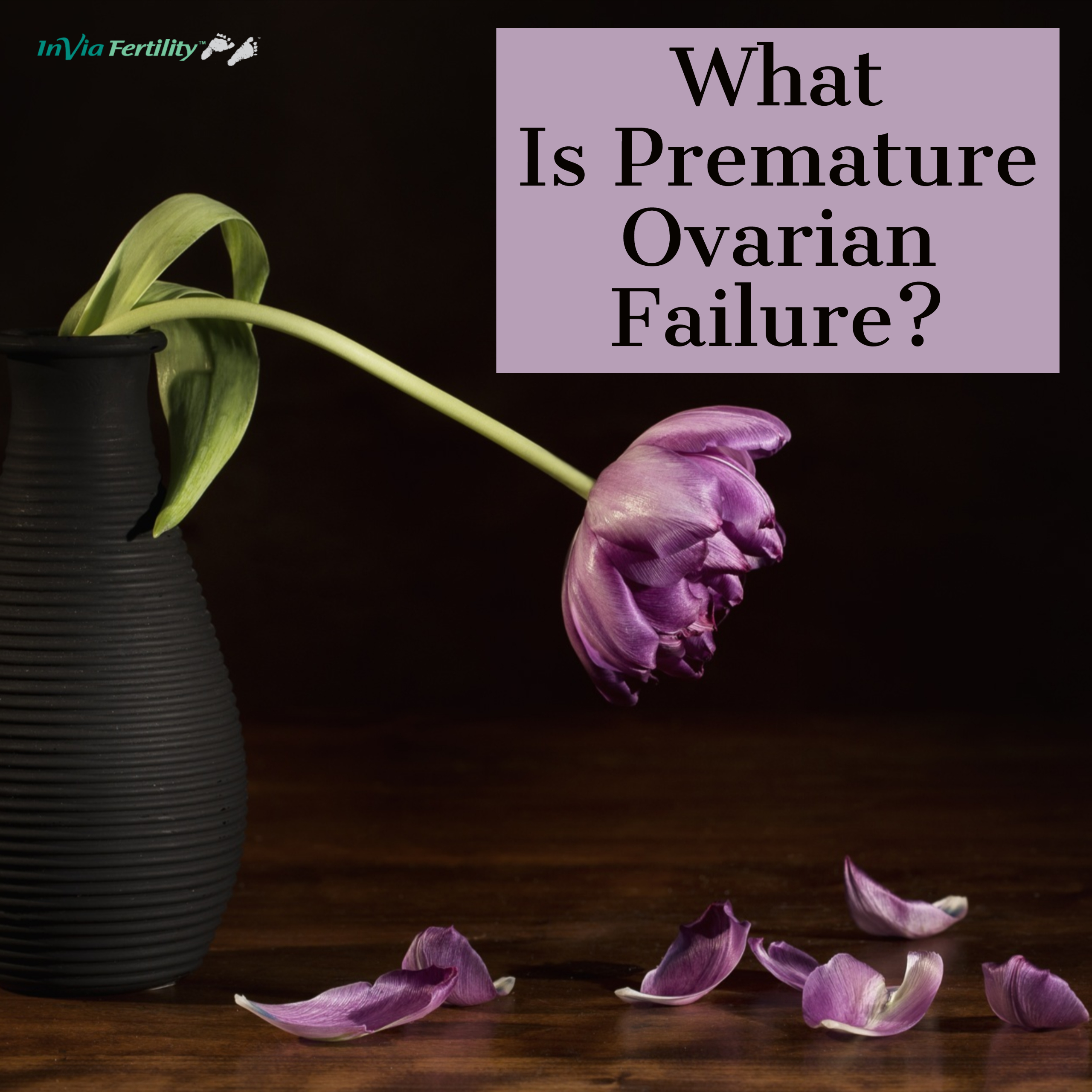-1.jpg?width=300&name=My%20Post%20(23)-1.jpg) Premature ovarian failure (POF) or premature menopause is diagnosed when a woman stops getting her periods due to cessation of ovarian function before the age of 40 years. The diagnosis is made based on elevated follicle stimulating hormone (FSH) levels (usually above 40 mIU/mL) detected on at least two occasions a few weeks apart. Approximately 1% of women will develop POF. In this blog, I will discuss some of the causes of POF.
Premature ovarian failure (POF) or premature menopause is diagnosed when a woman stops getting her periods due to cessation of ovarian function before the age of 40 years. The diagnosis is made based on elevated follicle stimulating hormone (FSH) levels (usually above 40 mIU/mL) detected on at least two occasions a few weeks apart. Approximately 1% of women will develop POF. In this blog, I will discuss some of the causes of POF.
- There are many causes of POF, including:
- Chromosomal – including both the X chromosome and autosomes
- Genetic
- Autoimmune (30% of cases)
- Metabolic (galactosemia)
- Infections (mumps)
- Iatrogenic (anticancer treatments)
In a large proportion of cases no cause is found and they are classified as idiopathic or karyotypically normal spontaneous ovarian failure.
- POF can run in families. In various studies, the incidence of familial cases ranges from 4% to 30%. Patients with a family history of POF can be guided to achieve their reproductive goals by timely planning of pregnancy.
- A well-defined cause of POF is Turner Syndrome (X monosomy). This is a condition where there is near complete absence of one X chromosome (45XO). These women present with absence of menses (primary amenorrhea), short stature and characteristic physical findings. In Turner’s syndrome, ovarian follicles degenerate by birth.
- Fragile site mental retardation1 (FMR1) gene abnormalities (Fragile X syndrome) can cause POF. The FMR1 gene is situated on the long arm of the X-chromosome (in Xq27.3, outside the Xq POF critical region). The mutations in this gene can lead to expansion of a trinucleotide repeat located at its 50 UTR region. Four types of alleles are identified based on the number of repeats: normal (6 – 40), grey-zone (41 – 60), permutated (61 – 200) and fully mutated (> 200). The full mutation is associated with fragile X mental retardation syndrome, the most common form of inherited mental retardation. The results of an international collaborative study examining premature menopause in 760 women from fragile X families showed that 16% of the 395 premutation carriers had experienced menopause prior to the age of 40 compared with none of the 238 full mutation carriers and one (0.4%) of the 237 controls.
- Other genetic causes of POF include Trisomy X, mosaicism, deletions, translocations, FSH receptor gene abnormalities and others.
- POF is commonly (20% of cases) associated with other autoimmune disorders. These include autoimmune thyroid and adrenal (Addison’s) disease. When multiple glands are involved, it is called autoimmune polyglandular syndromes (APS, 3 types have been described).
- The gold standard for detecting autoimmune causes of immune ovarian destruction has been ovarian biopsy. However, because there is no treatment proven safe and effective to restore fertility ovarian biopsy is NOT performed routinely.
- Cancer treatment including chemotherapy and radiation can cause POF. The chance of developing POF depends on the age of the patient and the dose and type of the chemotherapy agents used. A radiation dose of 9 Grays to the ovaries will usually cause POF. Surgically moving the ovaries away from the pelvis (ovarian transposition) or shielding the pelvic region (when possible) can reduce the incidence of POF. Egg (or embryo) freezing is an excellent option for fertility preservation in these patients.
- Surgery for ovarian cysts (e.g. bilateral endometrioma) can result in POF. When the cyst wall is removed, even in the best of hands, normal ovarian tissue is removed along with it. The remaining ovarian tissue results in significant ovarian compromise with resultant diminished ovarian reserve or POF.
- Toxins or viruses can cause POF. Mumps can destroy ovarian function. Cigarette smokers will have an earlier menopause. Heavy metals, solvents, pesticides, plastics, industrial chemicals can all disrupt ovarian function.
POF patients have a 5 – 10% chance of conceiving at some time after the diagnosis. The diagnostic tests currently recommended and treatment options will be discussed in subsequent blogs.

-1.jpg?width=300&name=My%20Post%20(23)-1.jpg) Premature ovarian failure (POF) or premature menopause is diagnosed when a woman stops getting her periods due to cessation of ovarian function before the age of 40 years. The diagnosis is made based on elevated follicle stimulating hormone (FSH) levels (usually above 40 mIU/mL) detected on at least two occasions a few weeks apart. Approximately 1% of women will develop POF. In this blog, I will discuss some of the causes of POF.
Premature ovarian failure (POF) or premature menopause is diagnosed when a woman stops getting her periods due to cessation of ovarian function before the age of 40 years. The diagnosis is made based on elevated follicle stimulating hormone (FSH) levels (usually above 40 mIU/mL) detected on at least two occasions a few weeks apart. Approximately 1% of women will develop POF. In this blog, I will discuss some of the causes of POF.


Comments